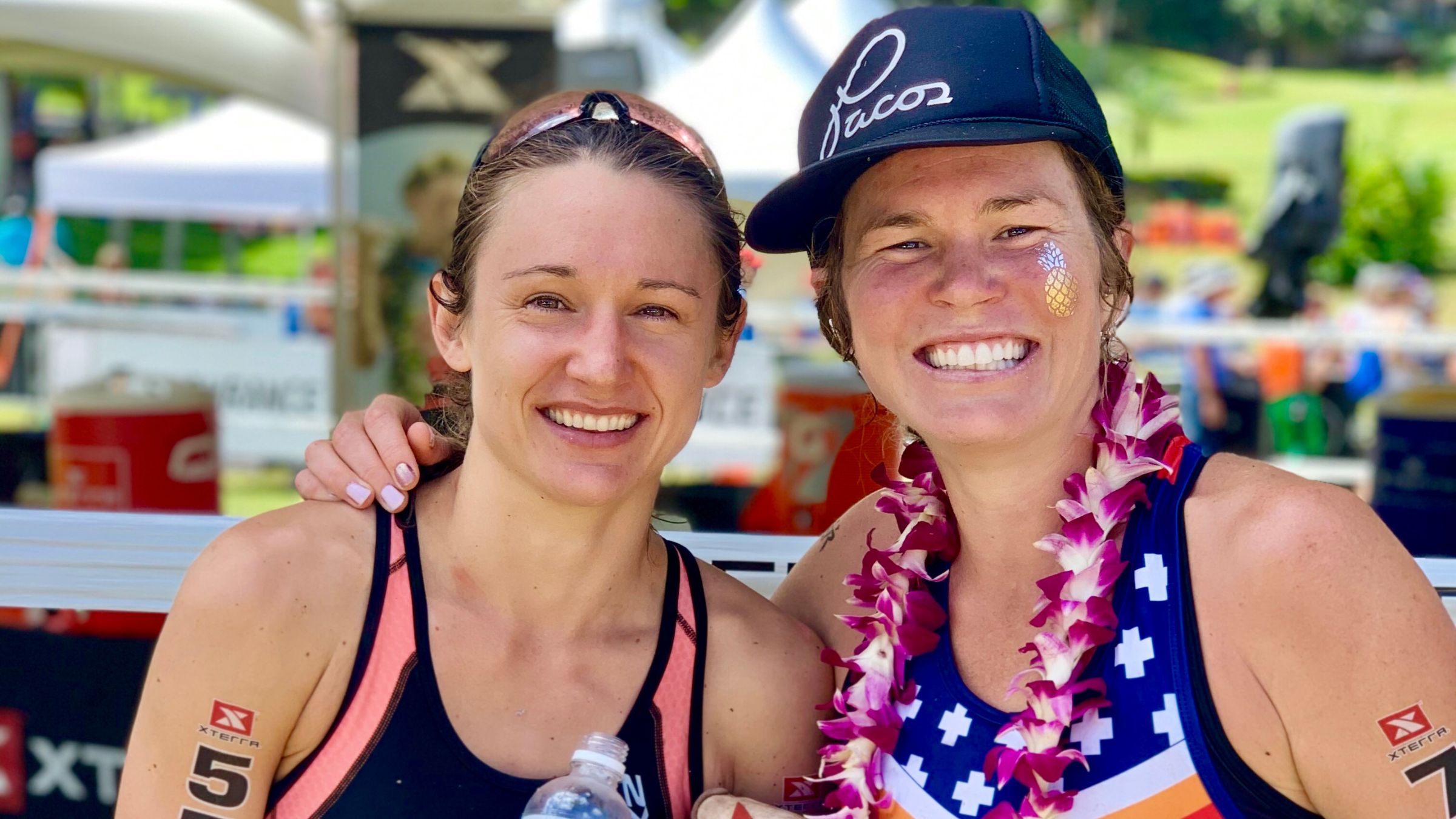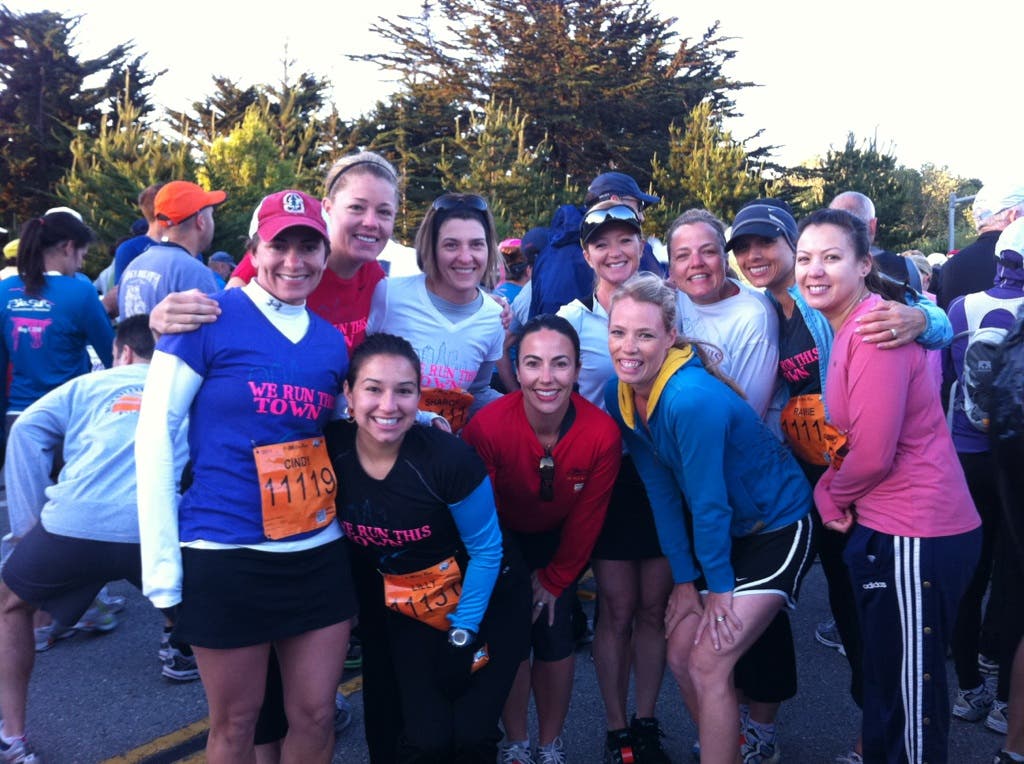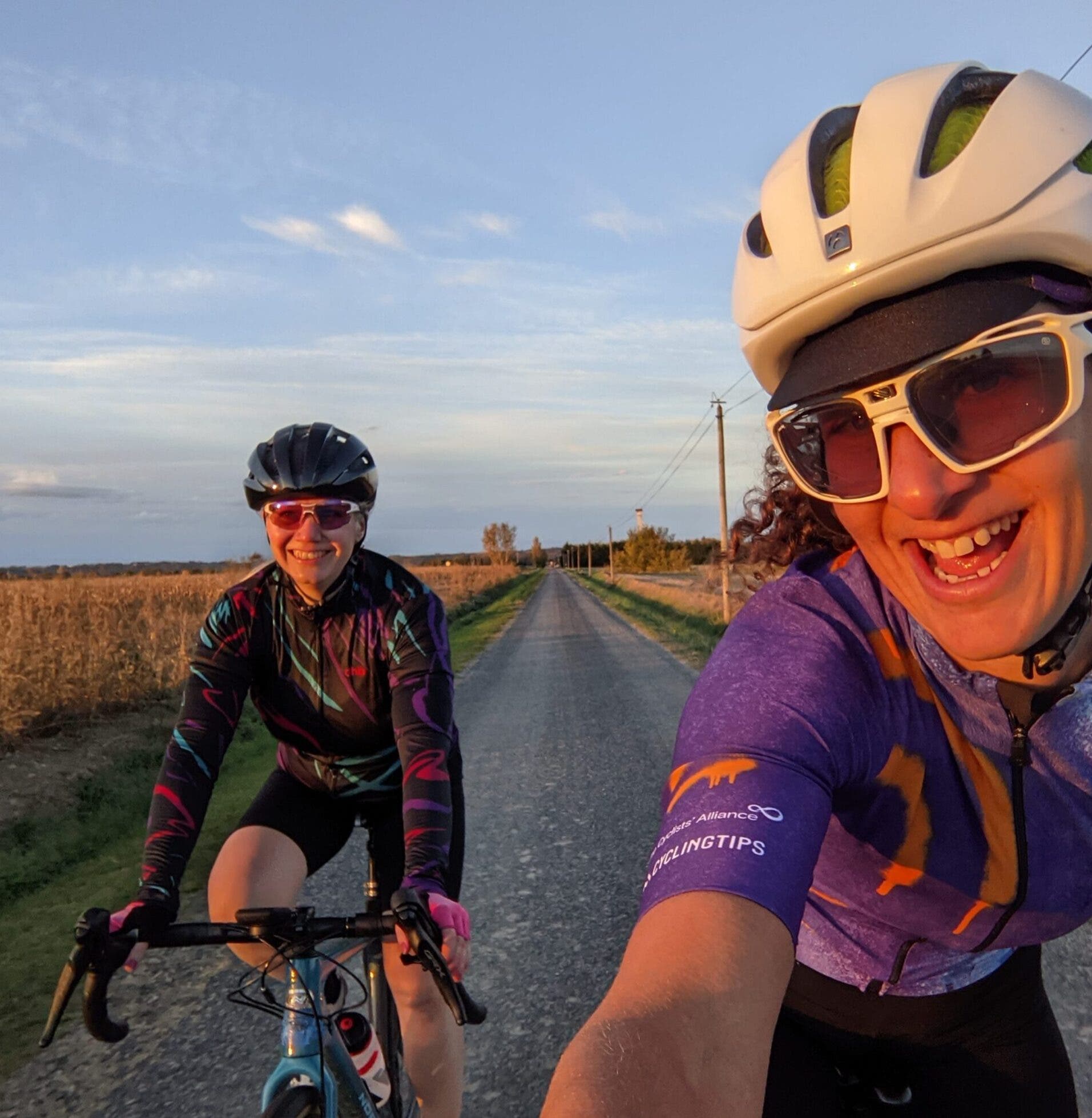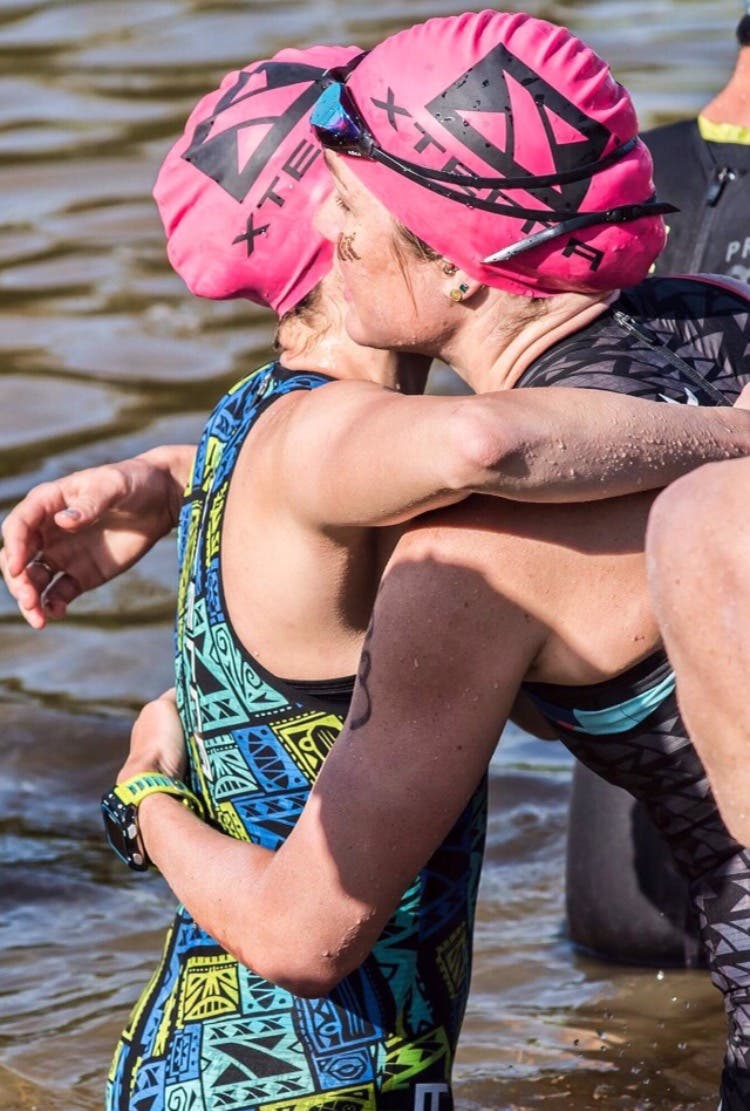Science Confirms: There's No Friends Like Tri Friends

(Photo: Kara LaPoint)
When I moved from a college town in Florida to a retiree-friendly city on the Gulf, I had concerns about meeting people with whom I’d have things in common. My husband and I were in our mid-30s, I worked from home while he traveled for his job, and we didn’t know a soul in town. The fact that I’m a reasonably awkward, introverted sort was not exactly a point in our favor.
But, in our old stomping grounds, we’d connected with people through a running group; specifically, one that met a couple evenings a week for a run followed by a pint. So, when we found a weekly Wednesday evening 5k running out of a craft beer bar right there in our new neighborhood, we were optimistic. Within a few weeks, we were home.
The bonds I formed through that weekly group run seven years ago led to some of the strongest friendships I’ve ever had, and my experience isn’t unique. If you’ve made friends through your sport of choice or you feel like your training buddies just get you, that’s not a coincidence – it’s right in line with what research has shown to be true.
RELATED: The 5 Training Buddies Every Triathlete Needs
Natural Connections
While reading the final installment of Julie Beck’s column, The Friendship Files, I immediately saw strong parallels between the forces she identified as fueling friendship and the factors that led to the relationships I’d built through running groups, Masters swim clubs, and group bike rides.
Beck, a Senior Editor at The Atlantic, interviewed countless individuals about all kinds of friendships for her column: friends who raised children or bought homes together, folks who maintained a decades-long Dungeons & Dragons campaign, people who connected through comics, comments sections, even cancer. Many of the commonalities she identified within these stories, like the amount of time spent together, repeated gatherings, and intentionally finding or making time for friends, are also easy to see in sport.
And that correlation makes perfect sense to Dr. Rebecca Adams, a sociologist in the gerontology program in the School of Health and Human Sciences at the University of North Carolina Greensboro. Adams, who was interviewed for one of Beck’s columns, has spent decades researching friendship and said that part of the reason for the correlation to self-selection.
Take, for example, the ease with which many people make new friends in college versus as adults. “College students – at least, traditional aged ones – self-select into schools based on their interest, their social class, sometimes based on their ethnic background,” she said. “When you’re in college, you tend to be with people you have something in common with.” And that’s not so different than showing up at, say, a weeknight fun run at a bar. “Our friends tend to be like us,” she said, “so anything that sorts us into activities where we’ll have things in common with people will help us establish friendships.”
But there’s much more to the story than simply finding similarities, so we asked Beck and Adams to weigh in on some real-life stories of sports-driven friendship to better understand why these relationships flourished.
Same Time, Next Week

Jessie Carr joined the Arete Women’s Running Club in Oakland, Calif., just as Covid restrictions were easing up. She’d moved there from San Francisco right before the pandemic hit, and although she’d long been a solo runner, but knew she needed to find a way to connect with people in the area. “The community and friendships formed as a result [of joining the club] are really fantastic,” she said. “The regular ritual of meeting up with a group of people – in my case a group of women runners here in Oakland – gave me the consistency needed to build and create friendship and accountability.”
Knowing that at least one woman she knew would be at a certain place a few days a week made it easier for Carr to get out of bed and lace up her shoes – but that wasn’t all. “Spending time together, and especially doing longer runs and activities, allows you to move into different layers of conversation,” she said, “and then the regular meetups allow you to continue conversations, ask how an event or meeting went, or check in on something that you were talking about a previous time.”
What the experts say:
Beck identified this as ritual, and said, “Honestly, ritual is one of the most important/actionable things I’ve seen. This is not to say you can’t have a friendship without ritual,” she said, “but for me, definitely the hardest part of maintaining friendships as an adult is just scheduling.”
That ties in nicely with Adams’ research. She’s found that one of the most important factors in establishing friendships is having unplanned, repeated interactions (like what’s provided through a run club) with people in an environment where you feel comfortable self-disclosing, or being yourself. “That unplanned, repeated interaction part is really important, because it means that you see people over and over again, and you don’t have to put any effort into it,” she said. “In the beginning of a relationship, it’s not like you meet someone and go, ‘I’m gonna be your friend, and I’m going to make an appointment with you.’ It happens after you see each other – repeatedly – and you get to a point where you think, Okay, maybe I have something in common with this person.”
Time in the (Theoretical) Saddle

Back in 2000, Kristen Simoes of Sacramento, Calif., was a young adult working at a new job – and she was lonely. So, she joined Team in Training. “I’d always been a casual runner and loved the idea of raising money for a good cause while training for a marathon,” she said. “Through the hours of training runs, I met some of the most amazing women who have since become some of my very best friends,” she said. Over the last two decades, they’ve supported each other through bad dates, horrible jobs, happy times, and all of life’s ups and downs, she said. “While many of us no longer run due to injury and increasingly busy lives, we still make a point to get together often.”
This happened again, 20 years later, when she connected with another group of women in a private workout group at her gym. Now, in addition to their regular sweat sessions, they hike the Dipsea Trail together each year. “Out and back it’s a total of 18 miles,” she said. “Plenty of time for all our jokes, tears, sweat, and blisters.”
What the experts say:
Accumulation is the term Beck used for this, and she referred to a study that found it took 40 to 60 hours of time together to turn an acquaintance into a friend. However, she added, “when you’re really putting in the hours while training, that might even be more of a quality hour than a regular hour because, to some degree, it’s kind of like a captive audience, right? It’s not easy to be on your phone and disconnect if you run out of things to say,” she said. “I can definitely see how that would be more conducive to forming your friendship more quickly than you might otherwise.”
Plus, Adams said, “There’s literature that shows that when you go through something intense with people where you have to depend on them in some way, that it also reinforces friendships.” The usual example is serving in the military together and being in a foxhole together or going through a natural disaster together as a community, but competitive sports fits that scenario. “It has that it has both the structural focus – the activity that would attract people who had some things in common – and then it also has the process component, where you’re dependent on each other and have to trust each other,” she said.
RELATED: When Her Friend Crashed at Worlds, She Gave Up Her Own Race to Help
Open to Opportunity

Like so many people, Bella Molloy’s plans were upended by the pandemic. The Aussie cyclist and her husband had moved from Australia to Europe just before the pandemic hit, and although they’d planned to relocate to France to start a cycling holiday business, they ended up in Dublin, Ireland, for 18 months. During that time, she turned to a turbo trainer to keep her cycling fitness up and joined Zwift. “Being on the other side of the world from my friends in Australia meant that I was often riding at times when they couldn’t,” she said. “I managed to join some group rides on Zwift, and through this met some likeminded people who I began to ride regularly with.” They took their friendships outside the cycling app, connecting on Whatsapp and Discord. “Even though we were all indoors, being able to talk to each other whilst cycling virtually was great,” she said. “What started as a few casual group rides turned into great friendships with people in all different countries.”
Molloy and her husband finally moved to Lourdes, in the French Pyrenees, last year and started their cycling company, Seek Travel Ride. “Since then I have been so happy to host three of my new friends for cycling holidays here in the French Pyrenees – where we finally enjoyed riding together in real life,” she said, noting that they were all struck by how well-formed their friendships were – like they’d known each other for years.
What the experts say:
In The Friendship Files, Beck found that paying attention to opportunities for connection – no matter how unusual they may seem – played an important role in many relationships. “I talked to so many people who met friends in weird or unexpected ways,” she said. “When you do connect with someone, even if it’s sort of in a in an odd way, hang onto it because, honestly, as an adult, those are really precious opportunities. They don’t always come around.”
Although Adams hasn’t studied online friendships specifically, Molloy’s story doesn’t surprise her – especially now, since virtual connections have become so ubiquitous in recent years. “It’s going to take a long time to figure out what impact Covid had on relationships, but it does seem to me that, in some ways, online works the same way as face to face,” she said. “If you go to the same place on a regular schedule, see the same people, and have an opportunity to talk to them, you might think, I might like to get to know this person.” And just as with an in-person relationship, someone has to make a move to take it outside that specific activity to allow the friendship to grow.
Making Moves

In Kara LaPoint’s case, that move came from her neighboring swim lane at her Masters swim group in Carbondale, Colo. “One of the friendliest people you could ever find, Katie introduced herself to me one day from the lane next to me,” LaPoint said. “We started chatting a bit, and realized we shared a lot of the same interests, and followed pretty similar training plans, with similar triathlon goals — it was clear that there was a bright ‘training buddy’ future ahead of us!” From there, the friendship grew into swim sessions outside of Masters and beyond. “Today, she’s not just a great training buddy, but a very close friend in all aspects of life,” she said.
What the experts say:
Being guided by this specific intention of finding someone who’s a great fit as a training partner might be particularly important for people who take their training and commitment to the sport seriously, and Beck sees that as a tie to our perception of work/life balance. “We talk a lot about work/life balance in our culture, and usually, what people mean by ‘life’ is ‘family.’” But, Beck argued, there’s a lot more to life for many of us – passions, hobbies, friends. She interviewed a group of women in high-powered corporate jobs who’d formed a group as a way to support each other professionally, but eventually, it turned into more because they found that work/life balance, as it was traditionally seen, didn’t leave room for friends. “Sometimes what they needed was advice from their friend group,” Beck said. “We put so much pressure on having your romantic partner meet all your needs in our culture, and that’s not something you can or should ask of any person.” Having an additional element within your friendship – like work or training – can make it a little easier to continue making that relationship a priority.
Of course, not all of us are as outgoing as LaPoint’s swimming buddy, but, Adams pointed out, it’s much easier to put yourself out there when you’re in an environment where you already feel like you fit in – like a training group. “Feeling comfortable self-disclosing partly comes from your disposition,” Adams said, “but it also comes with looking around and going, Oh, yeah, I have something in common with these people.”
Cool With Competition
LaPoint has also found that some of the friendships she’s forged specifically through racing triathlon to be some of her strongest – even though those same people are her toughest competition. Part of that has to do with sharing a challenging experience; after all, as LaPoint said, “There is nothing quite like what athletes experience out on a race course — the challenge, the pain, the grit, the triumph. It’s really one of those things that has to be shared to truly be appreciated.”
What the experts say:
This doesn’t surprise Adams, although she noted that the key here is having similar attitudes toward competition. “They’re also competing against themselves in a way, and they have a similar goal – which is to be better and better at what they’re doing,” she said. In instances like this, not only is competition no dealbreaker, but it can actually be the thing that brings friends together. “They’re subjected to the same pressures, they probably have the similar issues relating to other people who aren’t that competitive,” Adams said. “They have things to talk about, because of their similar involvement.”
And at the end of the day – or the race, as the case may be – it’s pretty great to have someone by your side who not only knows what you’ve gone through, but is there to cheer you on. “There’s a lot of attention given to how to support a friend who’s going through a hard time,” Beck said, “but we also need people in our lives who are going to show up for the good things. It’s really important to have people in your life who are going to celebrate your wins.”
If you’ve experienced these kinds of connections, the stories above probably aren’t too surprising. However, Beck – who does not consider herself a runner – said that she was surprised to learn that the sports she considers to be so individual are so full of community. “Running or doing a triathlon is a solitary thing. It’s a solitary achievement,” she said. “It’s an individual sport, and I think it’s really lovely when people build community around something that’s generally perceived to be more solitary.”